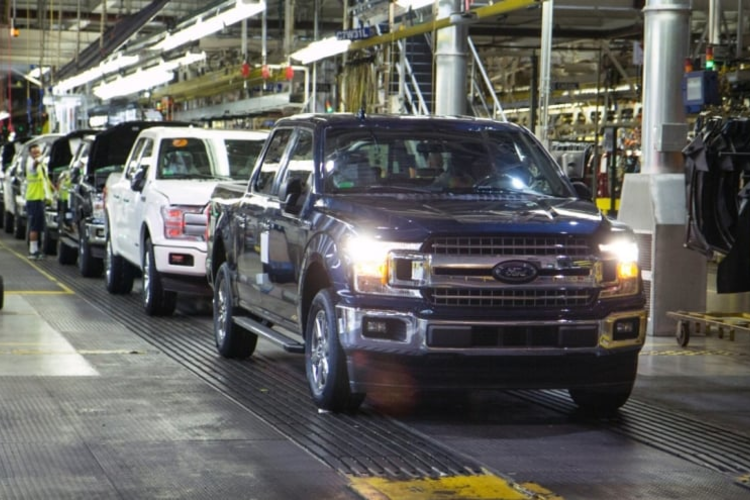Welcome to Thomas Insights — every day, we publish the latest news and analysis to keep our readers up to date on what’s happening in industry. Sign up here to get the day’s top stories delivered straight to your inbox.

Ford has been famous for game-changing supply chain management since Henry Ford implemented the world’s first modern automotive assembly line. Today, the company’s supply chain strategy has pivoted to support greater sustainability, increased efficiency, paving the way for automotive supply chain optimization. In 2019, Ford sold 5.5 million vehicles and ended the year with a net revenue of $155.9 billion.
Aspirational Sustainability Goals
Ford is recognized as a leader in corporate sustainability. The company takes part in three key sustainability initiatives:
- CDP’s Supply Chain Program
- Partnership for a Cleaner Environment (PACE)
- Responsible Business Alliance’s (RBA) audit-driven, third-party verified program.
Ford’s sustainability goals include achieving carbon neutrality by 2050, achieving zero emissions from facilities, and using 100% locally-sourced renewable energy for all manufacturing plants globally by 2035. The company also aspires to achieve true zero waste to landfill, eliminate single-use plastics from its operations, use only recycled and renewable plastics in all vehicles, and protect water security.
Ford recognizes that these goals cannot be achieved alone, and will require the participation of its supply chain partners to become reality. The PACE program involves Ford sharing examples of best-practice sustainability initiatives across the business with 50 strategic suppliers who replicate the benefits by cascading that information through their own supply chains.
Creating Efficiencies
Ford’s supply chain contains more than 1,400 Tier 1 suppliers and up to 10 tiers between supply and raw materials, which provides a significant opportunity to identify and reduce costs to protect against changeable economic conditions.
Analysts predict that Ford’s electric vehicle architecture will ultimately be less complex than that of ICE vehicles and will, therefore, lead to lower supply chain costs; particularly as battery costs continue to decline. Big players like Toyota and Ford are always looking for ways to cut costs without impacting quality; Toyota cut its motor costs in half in 2018, and now Ford is also reducing the complexity of its propulsion, safety systems, infotainment systems, and other functions.
Risk Evaluation
In May 2018, the sole supplier of three critical parts for Ford’s top profit-generator (the F-150 series pickup truck) caught fire, creating a supply chain crisis. The fire led to an estimated 35,000 vehicles not being produced, $1.6 billion in lost output, and 7,600 workers temporarily laid off.
Today, Ford relies on the diversity of its supplier base across the globe to reduce disruptions in its supply chain and has contingency plans in place when key suppliers are impacted by fire, cyberattacks, or other disasters. The company rigorously tracks risks associated with its top 50 strategic suppliers and the parts they produce to ensure business continuity. Ford has altered its standards and procedures to reopen factories as safely as possible during the COVID-19 pandemic.
Seamless Background Technology
An interview with Ford CEO Jim Hackett revealed his vision for technology that “is the star, but in a seamless, almost recessive role, working in the background to improve the vehicle and how the driver interacts with it.”
Ford has developed partnerships with VW, Rivian, and Argo AI to accelerate new technologies including electric vehicles (EVs). The company’s new COO Jim Farley has stressed the need for Ford to move faster with its $11 billion turnaround in terms of leveraging software, data, and connectivity in its vehicles to improve the customer experience.
Ford’s Electric Fleet
Ford intends to launch more than a dozen all-electric vehicles by 2022, tripling its current range of hybrids and EVs with an investment of $11.5 billion indicating the company’s genuine commitment to an electric future. Ford also intends to build the world’s largest network of 35,000 charging stations across the U.S. and Canada.
To compete with Tesla in EVs, Ford recently launched the Mach-E, an all-electric Mustang reboot that taps into the iconic Mustang’s enormous popularity. The launch is part of a trend where automakers release electric versions of classic cars, such as VW’s Electric Kombi, named the I.D. Buzz.
Image Credit: Courtesy of Ford Media Center


